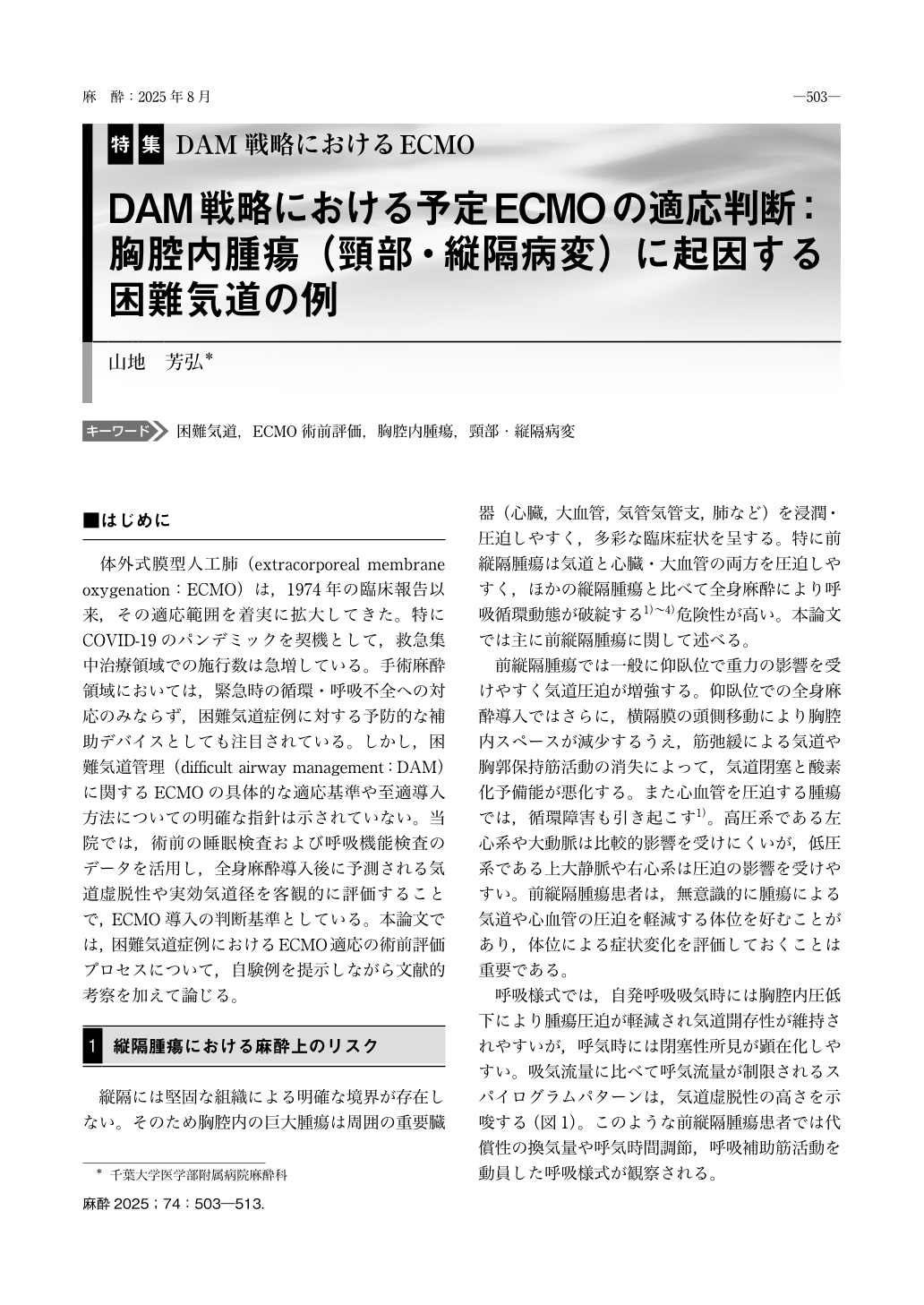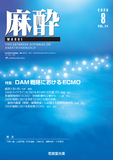Japanese
English
- 有料閲覧
- Abstract 文献概要
- 1ページ目 Look Inside
- 参考文献 Reference
はじめに
体外式膜型人工肺(extracorporeal membrane oxygenation:ECMO)は,1974年の臨床報告以来,その適応範囲を着実に拡大してきた。特にCOVID-19のパンデミックを契機として,救急集中治療領域での施行数は急増している。手術麻酔領域においては,緊急時の循環・呼吸不全への対応のみならず,困難気道症例に対する予防的な補助デバイスとしても注目されている。しかし,困難気道管理(difficult airway management:DAM)に関するECMOの具体的な適応基準や至適導入方法についての明確な指針は示されていない。当院では,術前の睡眠検査および呼吸機能検査のデータを活用し,全身麻酔導入後に予測される気道虚脱性や実効気道径を客観的に評価することで,ECMO導入の判断基準としている。本論文では,困難気道症例におけるECMO適応の術前評価プロセスについて,自験例を提示しながら文献的考察を加えて論じる。
The applications of extracorporeal membrane oxygenation(ECMO)have steadily expanded since ECMO was first used clinically in 1974. The COVID-19 pandemic in particular has led to a dramatic increase in the implementation of ECMO in emergency and intensive care settings. In the field of surgical anesthesia, ECMO has drawn increasing interest not only as a response to emergency circulatory and respiratory failures but also as a prophylactic support device for cases involving difficult airways in patient with giant intrathoracic tumor.
However, clear guidelines providing the specific indications and optimal implementation methods for ECMO in cases presenting difficult airway management(DAM)have not been established. At our institution, we use patients’ preoperative sleep study data and pulmonary function test results to objectively evaluate potential airway collapsibility and to assess the effective airway diameter following the induction of general anesthesia, using these parameters as criteria for ECMO implementation decisions in patient with giant intrathoracic tumor.
This chapter discusses the preoperative evaluation process for ECMO implementation in difficult airway cases and summarizes our clinical experiences, together with a review of the relevant literature. Our approach integrates objective measurements with clinical assessments to develop a systematic framework for ECMO use in challenging airway scenarios.

Copyright © 2025 KOKUSEIDO CO., LTD. All Rights Reserved.


